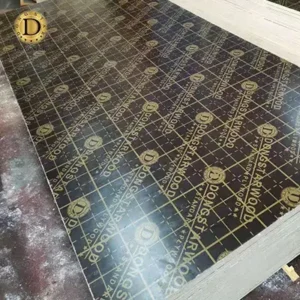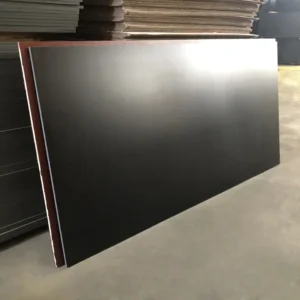1. Manufacturing Process of Film Faced Plywood
The manufacturing process of film faced plywood involves several precise steps:
Core Preparation: The wood core, often made of hardwood or mixed woods, is prepared and sanded for an even surface.
Film Application: The adhesive-impregnated paper is applied on both sides of the core material.
Pressing: High-pressure hot pressing ensures that the film is securely bonded to the core, creating a smooth and uniform surface.
Cutting and Finishing: After pressing, the plywood is cut to size and edges are sealed to further protect against water infiltration.

2. Differences Between Film Faced Plywood and Other Plywood
While traditional plywood serves a variety of purposes, film faced plywood offers added protection that extends its lifespan and functionality. Unlike melamine-covered plywood, which is often used in furniture making, film faced plywood is designed for harsher environments. MDO and HDO are often used for signs or heavy-duty exterior sheathing but lack the water and wear resistance offered by film faced plywood.
3. Applications of Film Faced Plywood
Film faced plywood is primarily used in construction for concrete formworks, shuttering, and flooring due to its strength and ability to resist moisture and harsh conditions. It’s also commonly used in the construction of scaffolding platforms, floorboards, and partitions.
4. Outdoor Usage and Durability
Film faced plywood’s main advantage is its resilience in outdoor settings. It’s engineered to withstand direct exposure to elements such as rain, snow, and heat without warping or losing its structural integrity. This durability makes it perfect for long-term outdoor applications, including temporary buildings, site sheds, and even stages for outdoor events.

5. Benefits of Using Film Faced Plywood
Extended Lifespan: Thanks to its water-resistant properties, this plywood lasts longer than traditional plywood.
Versatility: Suitable for a variety of applications, from flooring and walls to concrete forms.
Cost-Efficient: Although more expensive than regular plywood, its longevity and strength reduce the need for frequent replacements.

